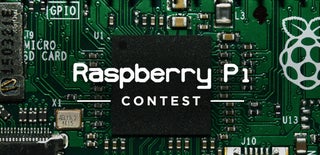Introduction: RPI Homemade Hat
Hi,
My name is Boris and this is my very first Instructables.
I have a Raspberry Pi 3B+ and I use it for simple home automation like control the TV, AC and some lights.
Recently I bought a cheap chinese CNC router and started to making simple PCBs(I want to point that I am absolute beginner in electronics so there might be some mistakes).
One of the first idea I had was to build board for the RPI that has temperature sensor and IR led.
So this instructable is about what tools I use to accomplish this idea.
Step 1: BOM
The components I used for the board are simple, however they are mostly SMD:
- Raspberry PI 3B+
- Si7020-A10 *Temperature and humidity sensor
- MF25100V2 *25x25mm fan
- 1x4.7k 1206 resistor
- 1x63 1206 resistor
- 1x100nP 1206 capacitor
- 1x1N4148W diode
- 1xBC846B transistor
- 1x IR Led *I just grab one from old tv controller
- PCB Single side copper *the cutout board is with size: 36x46.30mm
- 2.54mm 2x20 pin header
For the PCB fabrication I used a 3018 CNC, engraving bit(0.1mm tip with 30˚ angle), 1mm bit for board cutout, 0.7mm bit for PCB drills.
The software I used is:
Step 2: PCB Schematic
The schematic is very simple, the Si7020 use i2c protocol so it must be connected to pin 3 and 5 on RPI, the fan must be connected to pin 2 or 4 and all other component can be assign at different pins.
Currently i use these pins because for me it was the simplest way to design the traces for the pcb.
It is important to say that when I add component(or make trace) in the pcb design I always make this component pads at least 0.6mm. For example if the pad is with size 0.6x0.4mm I make it 0.6x0.6 and this is because my CNC is unable to make it smaller without cutting too much.
Step 3: PCB Milling
For pcb milling I use 30˚ angle bit with 0.1mm tip.
FlatCamp setup
- For traces cutout
- Tool Diameter: 0.13 Type V.
- The "Cut Z" should be -0.06mm.
- Enable Multi-Depth with value: 0.03
- Travel Z: 1.2
- Spindle speed: 8000(this is max for my DC motor)
- For holes drill and board cutout
- Cut Z: -1.501 *I use 1.5mm F4 PCB so this value should be changed according to your pcb thickness.
- Travel Z: 1.2
- Spindle speed: 8000(this is max for my DC motor)
I left all other settings unchanged:
- Feed Rate X-Y: 80
- Feed Rate Z: 80
bCNC setup
Before start milling I run autolevel and I aways set X-Y steps for probing to be maximum 3mm.
Step 4: Soldering
For soldering I use Dremel Versatip which can be used as hot air gun or soldering iron.
First I start with the iron tip. I apply flux to every pad I will use(the brown and black sports on the pcb in image gallery are flux). After that I apply very little amount of tin. Then I switch to hot air gun, position the components on there places and start heating them.
Step 5: Run and Useful Links
For IR led I use Lirc and for the sensor I wrote a little python script.
Test the sensor:
As you can see the temperature measured by the sensor is 31˚. The actual temp is the room was 24˚.
The diif comes from the RPI temp, which is 45˚ with fan running. So when I return the measured temperature from the sensor I subtract "7" and the returned value is pretty accurate.
I apologise for all mistakes I made(my english is not very good).
If you have any questions I will happy to answer you.

Participated in the
Raspberry Pi Contest 2020









